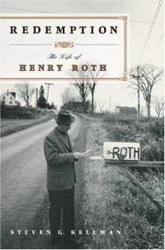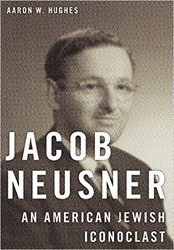Stephen S. Wise was the most prominent American Jewish clergyman during the 1930s and 1940s, and, according to A. James Rudin, the preeminent American Jewish leader of the first half of the twentieth century. He frequently received letters delivered by the United States Postal Service from overseas simply addressed to “Rabbi, USA.” The subject of several books, “No other rabbi before or since Wise,” Rudin writes, ever “dominated the American and the international scene with such passion and power.” Contemporary American Jewish leaders can “still look to Wise as a model of what gifted leaders can achieve and build: Jewish self-esteem, social justice engagement, full participation as Jews in American society, and the democratization of religious and community life.”
Wise was a strong advocate of liberal Judaism and looked askance at traditional Jewish practices such as the dietary laws and observance of the Sabbath. Instead, he manifested his Jewishness by speaking out in behalf of a host of social and political causes, including opposition to anti-Semitism, the liberalization of American immigration laws, the strengthening of labor unions, the abolition of child labor, women’s suffrage, social security legislation, support for international organizations such as the League of Nations and the United Nations, civil rights for blacks, pacifism and antimilitarism, Prohibition, the antitrust campaign, anti-colonialism, and particularly Zionism. Particularly notable was his support for factory legislation after the tragic Triangle Shirtwaist Factory fire in New York City in March, 1911. Wise was also a pioneer in fostering Christian-Jewish relations and had an especially close rapport with John Haynes Holmes, the minister of the Unitarian Community Church in New York City.
Wise was also deeply involved in Jewish organizational life. It is unlikely, Rudin claims, that “we shall ever again see such a centralization of personal influence and power in a single rabbi.” Wise was one of the founders of the American Jewish Congress in 1918; he established his own rabbinical seminary (Jewish Institute of Religion) in 1922 and helped organize the World Jewish Congress in 1936. His most important organizational contribution was founding his own synagogue: in 1905 he was offered the pulpit of Temple Emanu-El in New York City, the most prestigious Reform congregation in the United States, but he turned it down after being informed that his sermons and civic activities would have to be cleared beforehand with the congregation’s lay leaders. Instead, Wise launched his own “free synagogue” in Manhattan in 1907 which subsequently came to bear his name.
Wise strongly supported the New Deal and revered Franklin D. Roosevelt, whom he referred to as “the Chief.” This close association with FDR — Wise met with Roosevelt thirteen times between 1933 and 1945 — has been the most controversial aspect of Wise’s career as a Jewish leader. Wise was continually disappointed with the administration’s hesitant policies regarding the beleaguered Jews of Europe prior to and during World War II, but he hesitated to speak out publicly due to fear that this would forfeit whatever influence he might have had in the White House. Some historians have described Wise as a Roosevelt lackey and claimed that his silence made him complicit in the Holocaust. Rudin, on the other hand, believes Wise was more sceptical of FDR’s policies regarding the Jewish crisis than historians have assumed and fully aware that he was being manipulated by the President.
The Jewish Institute of Religion was created as an alternative to Hebrew Union College, which had been established by Isaac Mayer Wise (no relation) in Cincinnati in 1875. The JIR reflected Wise’s sympathy toward Zionism, while the HUC reflected the Reform movement’s scepticism toward Jewish nationalism. The two institutions merged in 1948, one year before Wise’s death, and seven years before Rudin began his rabbinic training at HUC-JIR in New York City.
The spirit of Wise permeated the merged institution during the six years Rudin was a student, and, not surprisingly, he shares Wise’s reformist theological outlook, his commitment to Tikkun Olam, his love of Israel, and especially his enthusiasm for Christian-Jewish cooperation. “I owe Dr. Wise a great deal,” Rudin writes, “and this biography is my way of repaying that debt.” Wise would have been pleased by the book since it is relatively free of the criticisms that a more analytical and dispassionate historian would have offered.
Related Content:





